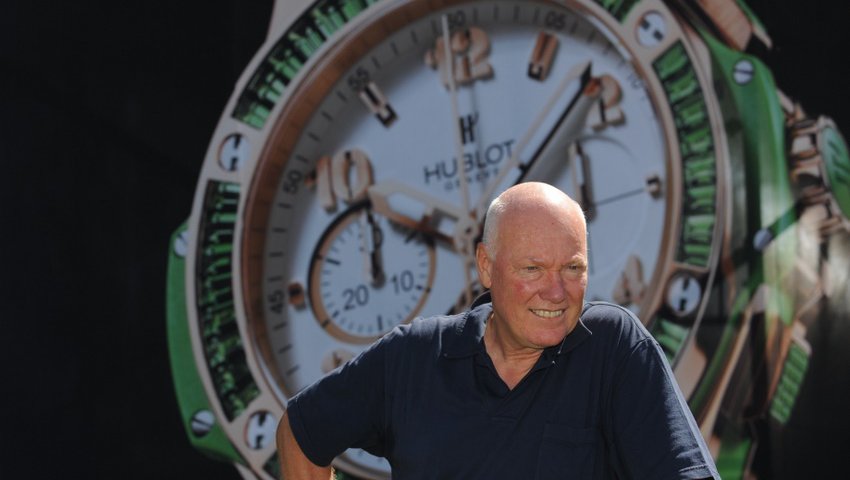Jean-Claude Biver, chairman of Hublot, can’t understand why anyone would buy a watch to tell the time, but explains to us just why the emerging client is so important

Jean-Claude Biver, chairman of Hublot, can’t understand why anyone would buy a watch to tell the time, but explains to us just why the emerging client is so important
Jean-Claude Biver, chairman of Hublot, can’t understand why anyone would buy a watch to tell the time, but explains to us just why the emerging client is so important.
Recently closing the Financial Times Business of Luxury Summit in Lausanne, Jean-Claude Biver captivated the crowd with some much valued insights into the Hublot brand he has driven since 2003, as well as his time re-launching Blancpain with Jacques Piguet and doing the same at Omega for the Swatch group.
Illustrating the state of the current timepiece market, Biver explained that out of 100 millionaires, in the US he would sell 35-40 pieces and in China he would sell 400, highlighting just how ‘watch conscious’ the emerging consumer has become.
Lightening the mood, Biver explained to a captive audience that to buy a watch to see the time was nothing short of ‘stupid’ as there are now so many ways to see the time for free. However, as with his own personal consumption of timepieces, his dominant markets – China, Vietnam, Brazil & India – now buy watches as a communication tool, to express their wealth, taste and elegance.
We caught up with Mr Biver in Lausanne after his electrifying closing address and present the first in our series of 5 Minutes With…
In your time at Hublot, what has been your favourite memory?
Which market are you currently experiencing the strongest growth?
The biggest growth for us is Brazil, probably followed by Mexico, Korea, Singapore, these markets are for the moment are growing very quickly for us, nearly doubling every year.
What is the next major launch you can tell us more about?
The next major launch took place yesterday! 12 hours ago – the launch of the Oceanographic 4000. It’s a diving watch that is water resistant to 4000 metres, which we launched together with the Oceanographic museum in Monte Carlo.
Then we will open our Bond Street store (London) on the 21st June and then there will be a launch of a very complicated watch that will be for the end of the year.
What is the biggest challenge Hublot will face in the coming years…
The biggest challenge is maintain innovation, creativity and technology, as we are mono-product we need to diversify not by adding new designs, but by bringing into the actual design new colours, new materials, new features, new movements, new technology. This must be maintained, which is the challenge, to keep the creative process going.
What one word best describes your strategy?
Always to be: first, different, unique.
What is the next opportunity you would like your company to seize?
The next opportunity is to retire in the company with the company and to have my successors take over after me, that is a fantastic challenge and if I succeed this, I will be a very happy man.
If you could change any aspect of the luxury industry what would it be?
The one thing I would change, I would make the customer faithful. In the luxury world the customers are always changing, they are not faithful to brands. So if I have one wish, I wish that the customer would stay faithful and stays with the brand.










